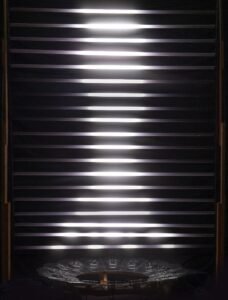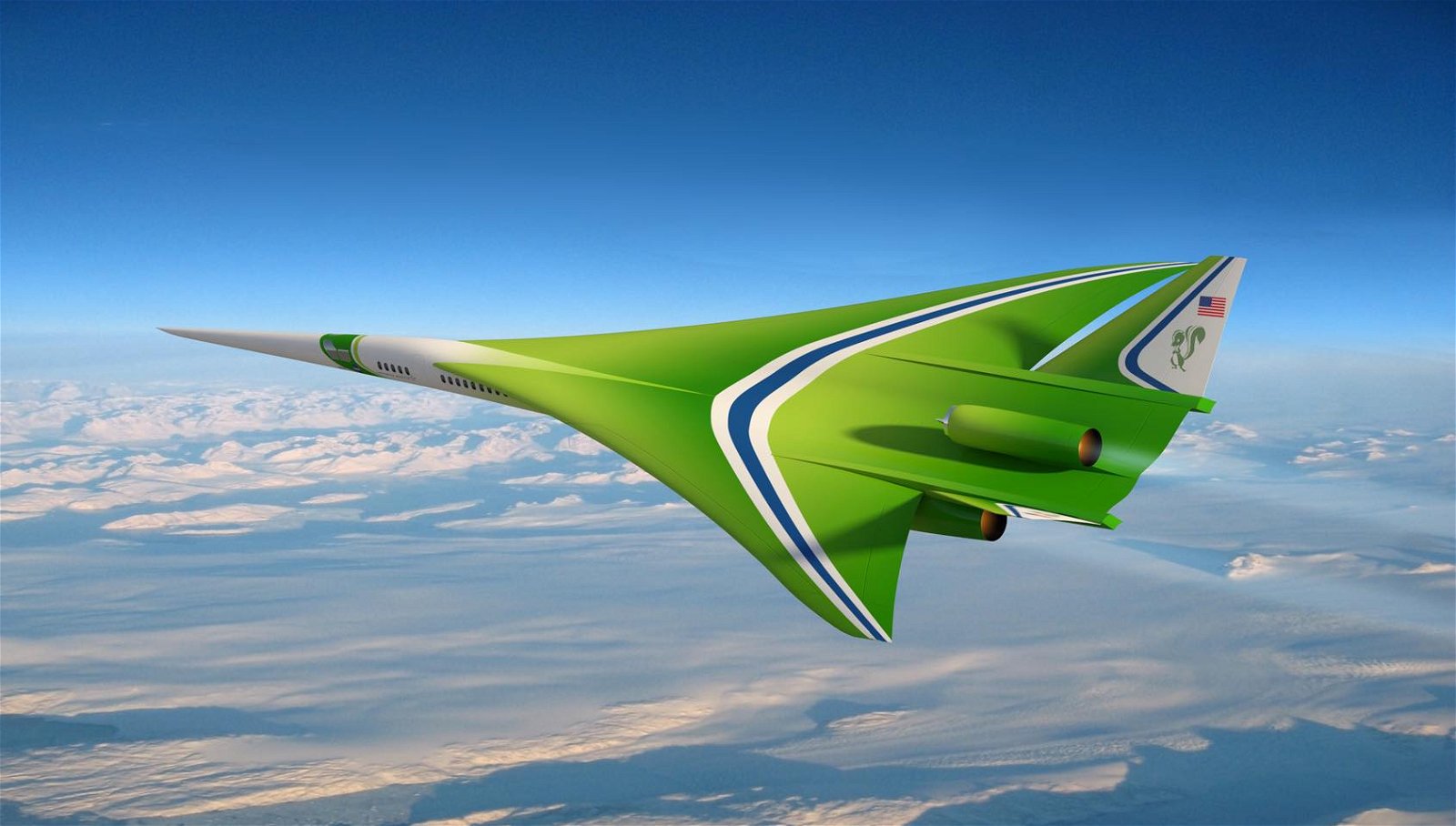Seattle, Washington-based aviation technology company Electric Sky has announced a significant breakthrough involving its Whisper Beam power beaming technology.
Funded by the U.S. military’s Defense Advanced Research Projects Agency (DARPA), Whisper Beam is designed to send power wirelessly to vehicles while in flight using only radio waves. Once commercially available, Whisper Beam will be perfectly poised to herald a dramatic shift in how passenger aircraft, flying taxis, drones, and satellites carry and consume the energy that keeps them aloft.
Air Travel Has Changed Very Little in Decades
In an interview with The Debrief, Electric Sky’s CEO and co-founder Robert Millman explained how he and his partner Jeff Greason first stumbled upon the idea of using power beaming to send energy to vehicles while they are in flight as opposed to aircraft needing to bring along all of their fuel with them.
“People today fly at the same speeds their great grandparents flew at,” Millman explained. “In fact, airliners today fly slightly slower than airliners in the 1960s and 1970s.”
The primary limiting factor, he noted, was the need for vehicles to carry all of the fuel they need with them on board in the form of antiquated fossil fuels. And while ground vehicles have finally begun their electric revolution in the last 25 years or so, the dawn of electric flight has yet to take off.
“Electricity is the perfect form of energy in many ways except one; it does not store very well,” said Millman of the primary factor limiting electric flight. “Fossil fuels, on the other hand, are the worst form of energy in many ways except one; they store very well.”
Unfortunately, storage is a huge part of the issue, as current electric aircraft prototypes must fly overly laden with heavy batteries. The limited storage offered by even the most advanced batteries severely limits flight times to mere fractions of those enjoyed by traditional aircraft. This roadblock has hampered the advancement of electric aircraft and is still the major roadblock in electric vehicles taking flight in any measurable way.
However, Millman says, times are rapidly changing, and technology like power beaming can break that equation, potentially ushering in a whole new era of electrically powered aviation.
Power Beaming for Whisper Beam Built on Established Physics
“The concern we have is flight technology has not advanced very much in the last several decades,” Millman told The Debrief. “So, we were looking to probe known physics and come up with better approaches. And this project, Whisper Beam, is an outcome of that.”
Although the concept sounds right out of science fiction, Millman notes that the idea of power beaming is built upon well-established principles of physics. In fact, he says it was his partner Jeff Greason who, in 2017, noted the solid scientific foundation that radio wave power beaming was built upon regardless of its out-there reputation.
“As much as wireless transmission gets dismissed as fringe, if you look at first principles, it is the right way to go, or at least should be seriously explored,” Millman recalls Greason saying. “The physics of it are pretty well known.”
In short, the technology involves using radio waves to send electric power to an aircraft that is equipped with a specialized receiving antenna, or “rectenna” as Millman called it, that can take that wireless radio wave and turn it into usable electricity. It is a surprisingly simple concept, but even Millman admits that taking something like power beaming from concept to execution with the goal of heralding a major paradigm shift in the way aircraft fly is no small task, regardless of how straightforward it may appear to be.
“We started in earnest in the 2017 timeframe, and we knew we were taking on some rather ambitious things,” Millman told The Debrief. “Let’s just say that changing the nature of flight is no small thing.”
The Type of Power Beam makes All of the Difference
As a first step, Millman and Greason looked at the main existing technology used to send power through the air wirelessly. Known as a Gaussian beam, that technology has a number of significant limitations that make it ill-suited for power beaming to distant aircraft.
First and foremost, Gaussian beams lose power as they go, meaning the farther away an aircraft is from the power station sending it energy, the weaker the beam. This also means that the power generation platform would lose way more energy than ever reaches the aircraft. That would defeat one of the key benefits of power beaming, namely energy efficiency.
Another limiting factor is the dangers associated with Gaussian beams. Specifically, anything that flies between the emitter array and the receiving aircraft would be bombarded with massive amounts of electromagnetic energy. This means that birds, drones, and even other aircraft would be at significant risk every time they fly over a power transfer beam. Combined with the power loss experienced by these types of power beams and the massive amounts of energy required to compensate for that power loss to adequately fuel an aircraft in flight, a Gaussian beam would represent a costly, immediate danger to anything that crosses its path.
“You want to put high power on the vehicle without putting high power on everything in between,” Millman explained. Fortunately, he says, there are types of wireless radio wave beams, known as non-Gaussian beams, that can be custom-shaped so the peak power is at the aircraft and the space between the transmitter and aircraft is a low power zone.
“The way this beam works, it is actually the lowest power directly between the transmitter and the receiver,” Millman told The Debrief.
Of course, he notes, no commercial applications of power beaming with non-Gaussian beams currently exist, but the base technology itself has been around for decades.
“The major issues have been worked out,” Millman said. “The engineering issues, how to turn this into a practical application. Let’s say that there are many solved problems that have been solved over the last 4 or 5 decades, so it’s not like we are solving new stuff.”
For Whisper Beam, Millman says the next practical steps are what he and his team are undertaking now, mainly reducing the non-Gaussian radio wave emitters to a lightweight transmission system that can send the power directly to an aircraft in flight.
“These are all things that have been done, either in the world of radio or wireless communication, that we will apply to our wireless power transmission,” Millman explained. “It’s a mound of work that we look forward to going through.”
Whisper Beam Making Huge Strides Toward Taking Flight
After years of preparation and design, Millman and Greason started to test their ideas in simulation software designed to simulate radio waves and their behaviors. This involved designing and simulating different methods of shaping the non-Gaussian power beams so that they are at their strongest when they reach the aircraft and, conversely, are at their weakest between the emitter array and the receiving aircraft. That work, which Millman notes took them years to complete, was a success.
After that milestone, the duo took the next step of trying to build a proof-of-concept system. The result was their first successful laboratory test in January of 2023.
In that experiment, Millman and Greason and their third team member, technician Tim James, built a customized power-beaming station that features 16 radio wave emitters in a circular array, kind of like a satellite dish array. Then, using the concepts derived from their simulations, this custom power beaming station was able to shape the radio waves, so their peak power not only coalesced at the desired spot but, in this case, was enough to light up a light bulb that had been placed about 3 meters above the transmission array.


“All of the computer simulations predict this is how the waves will behave, but we still wanted to build something physical and then measure them physically to prove that the physical waves are matching the simulations,” Millman told The Debrief. “And they do!”
How Whisper Beam Could Revolutionize Commercial Flight
Throughout the interview, Millman repeatedly emphasized how the higher a plane flies, the more efficient flight can be. For example, a commercial airliner typically cruises between 30 thousand and 40 thousand feet of altitude. This limitation exists in no small part because internal combustion engines need air to generate thrust. Unfortunately for these types of engines, the higher an aircraft goes, the thinner the air they need to create thrust becomes.
The ideal situation, says Millman, is an aircraft that can fly as much as twice as high as current aircraft where the air is thin, allowing for much more efficient travel, especially on long flights. Electric-powered aircraft can do exactly that, allowing for a dramatic reduction in flight times. Still, as previously noted, the types of battery-powered electric vehicles that can take advantage of the thinner atmosphere and lower drag at higher altitudes to reduce flight times have limited power storage. But an electric aircraft that receives power via Whisper Beam doesn’t suffer from this limitation.
“When we take our array designs and transfer them into computer simulations, we can easily transfer power to vehicles flying at 70, 80, 90 thousand feet,” said Millman.
This ability to take advantage of the benefits of high-altitude flight AND electric flight at the same time is the primary driving force behind Electric Sky. It is a goal that attracted DARPA to the program and is one Millman and Greason believe is finally within striking distance.
“If you could pay the same price as a sub-sonic airline but arrive in a quarter of the time, then clearly that’s a better approach,” Millman told The Debrief. “And with zero emissions along the way.”
Emerging Markets May Include Air Taxis or Even Sending Power to Outer Space
Following the success of their light bulb experiments in January, Millman and Greason say they have some attainable, yet admittedly ambitious, goals. One such target is the burgeoning industry of drone-style people carriers, often called air taxis or flying cars.
“A substantial amount of the total energy budget (for flying cars) is used in climbing to altitude,” Millman explained. “If instead, you could enter the cruise phase, at altitude, at 100% charge, that electric vehicle now has more range. And if you again charge coming back in on landing, that vehicle can turn around faster at the gate. So it is more economical as well.”
For winged aircraft that would employ the Whisper Beam system, Millman says that the placement of the transmitter would also be designed to help vehicles tackle the massive power used during take-off and landing, reducing flight times and making electrically powered flight more energy efficient.
“With electric craft, you could position a transmitter near a runway, and you could be powering take-off and climb,” Millman explained.
Millman also pointed out that while his team is working on improving and scaling up their power-beaming technology with goals of building “bigger and more powerful” beaming arrays, they also have goals of designing fully electric aircraft that can cruise at altitudes well above 70k feet. Still, he cautioned, as a company looking to upend over 100 years of aircraft aviation and usher in an entirely new era of electrically powered flight, they need to take things one step at a time.
“We decided, ‘let’s attack that (power beaming) first.’ Because, if you don’t have power transmission, you can have the best electric propulsion system in the world, but if you don’t have a power source at altitude, it doesn’t get you anywhere.”
As far as the distant future and where power beaming could ultimately go, Millman says they have modeled a system that can send power as high as 740 kilometers. This extreme altitude is well into low earth orbit, meaning their technology could not only power aircraft of the future but could also power spacecraft or space stations that operate in low earth orbit.
One example used by Millman is the International Space Station (ISS), which typically hangs out at about 350 Km, an altitude that is well within the range of Whisper Beam simulations. As such, the ISS, Millman notes, would be an ideal long-term candidate since it currently employs massive solar arrays to generate around 100 kW of useable power.
“That’s a lot of solar arrays for very little power,” Millman says with a chuckle.
Next Steps and Long-Term Vision for Whisper Beam
Given the impressive resumes of Millman and Greason (which include leading efforts at companies like Blue Origin and Aerojet), the support by DARPA for their current research, and the milestones the company has already achieved, one gets the impression that it is merely a matter of time before aircraft of all types are having power beamed to them through the air using a system like Whisper Beam. Still, the duo is proceeding with deliberate caution as they tackle and overcome engineering steps one at a time.
“We operate on the 80/20 rule,” said Millman. “Thus far, we have overcome about 20% of the challenges to make this a commercial system with about 80% of the overall time and effort needed (to complete the project). That was the hard part. The remaining 80% is pretty much straightforward and is what it will take to get this (to a commercial) system. That is what we are doing now.”
Clearly enthusiastic about how power-beaming technology could dramatically alter the aviation industry and with a significant milestone now in the rearview mirror, Millman says that a huge challenge is explaining to the world that this technology is not science fiction or a pie-in-the-sky concept but is simply a natural evolution similar to the electrification of the automotive industry.
“Electric flight is closer than people think,” Millman told The Debrief.
“And part of my job is to help people understand that.”
Christopher Plain is a novelist, comedian, and Head Science Writer at The Debrief. Follow and connect with him on Twitter, learn about his books at plainfiction.com, or email him directly at christopher@thedebrief.org.

